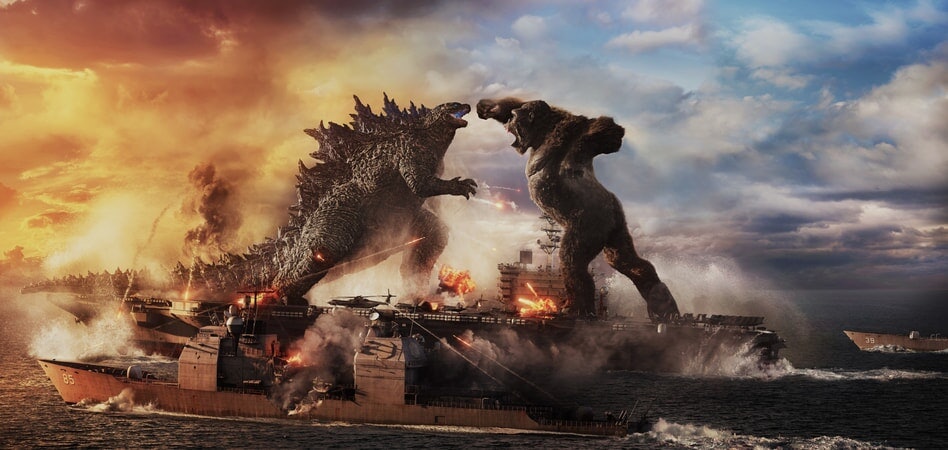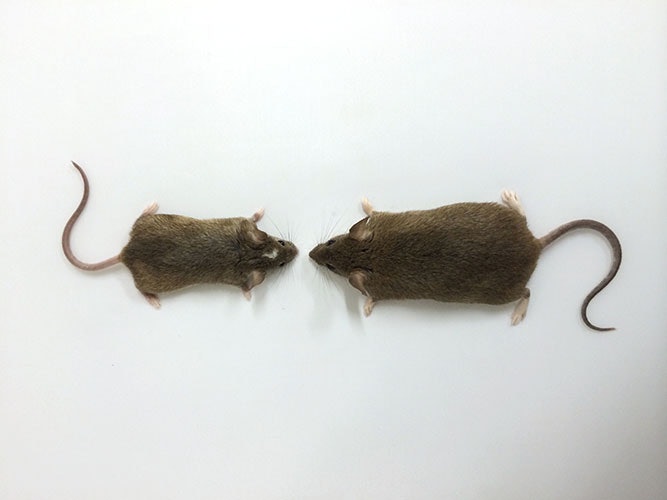
For decades, King Kong and Godzilla have captured the public imagination. Since their respective debuts since 1933 and 1954, they’ve been rebooted time and again. They’ve even gotten to share a couple movies that honors their larger-than-life lust for destroying buildings. The 2021 action film Godzilla vs. Kong (which removes the gorilla’s monarchal title) provides the latest opportunity for these two giants to duke it out in this sequel.
In the film, it’s been five years since the dragon-like alien King Ghidorah roused the Titans, only to face defeat at Godzilla’s little hands. Kong lives out his lonely days in a dome on Skull Island, but he’s thought to be the only giant who can fend off Godzilla’s sudden attacks. A team of scientists dig further into the Titans’ home world, the Hollow Earth, where they learn the primate and lizard actually have some beef. That’s about when the researchers also learn that there’s a Mechagodzilla in the mix, too.
A few things make this movie unlikely to occur. For one, most lizards truly are silly little guys who simply enjoy basking in the sun. If there are any humongous lizards endowed by an atomic blast, they’ve done a good job leaving us alone. They have no need to fight a giant gorilla, even to finish an ages-old war.
The main principle at play in this film — supersized creatures originating from remote locales — isn’t entirely far-fetched. Size and growth both factor into evolution, and sometimes where a species lives can make all the difference. We may not have to worry about any Titans, but there are certainly some creatures who have exploded in size from their isolation in island colonies like the Galapagos and Seychelles Islands.
Reel Science is an Inverse series that reveals the real (and fake) science behind your favorite movies and TV.
Island rule
The principle of a population’s size increasing or decreasing because of its isolated island environment is called the island rule. Kong is the beneficiary of island gigantism (while Godzilla benefits, rather, from an atomic blast).
While theories behind this evolution abound, researchers still aren’t certain of exactly why or how it happens. Some favorite island giants have been turtles and tortoises from the Galapagos and Seychelles Islands, the dodo bird from Mauritius, and the Komodo dragon (which is arguably the closest thing we have to Godzilla right now).
“It's a mystery, and that's one of the reasons we're interested in it,” Bret Payseur, a genetics professor at the University of Wisconsin-Madison, tells Inverse.
The opposite can also occur as island dwarfism. Any animal, including an extinct species of hominid that Payseur mentions, described as “pygmy” is an example of a dwarfism version. Not just any animal can become a larger or smaller version. Payseur says that typically large animals are prone to shrink, while little guys are prone to grow. Island rule encompasses both gigantism and dwarfism.
This phenomenon was first described in a 1964 paper that focused on mammalian evolution on islands, though author and naturalist Bristol Foster didn’t find compelling evidence for a substantial size increase among island shrews. Still, data suggested that there was a trend between island environs and different sizes. In a 1973 paper, evolutionary biologist Leigh Van Valen coined the term “island rule” for this principle.

Supersized critters
Payseur explains the first flaw in the film’s science, which is that island rule typically states that animals with a small body mass get bigger, while animals with a large body mass get smaller. As far as we know, there’s nothing right now about an animal as large as a gorilla growing to the height of a building. He’s most familiar, however, with a case of island gigantism in house mice — the very same species that you may find dwelling in your home.
These relatively enormous mice live on Gough (pronounced like “goff”) Island in the South Atlantic. Save for some researchers stationed there, the island is uninhabited by humans. They may not be Godzilla, but these mice are twice the size of mice of the same species (Mus musculus) that live on the mainland. While scientists aren’t certain when or how they arrived on the island, Payseur suspects that they arrived from Western Europe several centuries ago on sealing ships.
The rodents we are familiar with weigh 15 grams on average, while Payseur says Gough Island mice are 30 grams. It’s not just that these mice pack on more weight, but their bodily proportions are different, too.
“Their bodies have evolved in concert with that, so they're also longer and they have bigger bones,” he tells Inverse.
Another consequence of island rule may be behavioral changes. The Gough Island mice have a few surprising aberrations, including their carnivorous diet. Mice typically subsist on fruit, nuts, and seeds, but these giant island mice have a “weird adaptation” to devour birds “a few hundred times their size,” Payseur says, mainly albatross chicks. What’s more, these stone-cold killers eat the chicks while they’re still alive, “which is pretty gruesome,” he adds. This macabre diet may also contribute to the fact that they bite harder than mainland house mice.
Researchers have also compared how these island mice behave against mainland mice in a controlled lab setting. Payseur says others have found that island mice are bolder, less anxious, and more exploratory. Foxes on the Channel Islands have also been observed to act less coyly, in addition to being on the smaller side.

Possible evolutionary theories
One big question remains: What factors drive these animals to evolve a whole new size? While island rule still doesn’t explain that yet, researchers look for connections between their physiological and behavioral traits, and their environment. Much like in Hollow Earth, fauna’s home can determine how it flourishes.
A larger size and bolder attitude may come from their relatively sweet setup on Gough Island: no predators, no competition, and generally abundant resources. “In those ways, life is better for them than on the mainland,” Payseur says.
On the other hand, mainland predation could be responsible for removing larger animals from the gene pool. “It's possible that on the mainland, larger mice are more likely to get caught by avian or terrestrial predators,” Payseur says. “So on the island, without predation maybe the mice are free to get bigger.”
A 2021 paper published in the journal Nature Ecology & Evolution offers a comprehensive phylogenetic meta-analysis of known island fauna, and found that the more remote an island is, the more pronounced the effects of island rule are on its inhabiting species. “There's maybe something about cutting off migration from other places that can allow them to take a sort of new path,” Payseur says.
This paper also says that island rule’s effects are more apparent among mammals, birds, and reptiles, which does technically encompass both Godzilla and Kong. However, we likely don’t have to worry about any mega primates or lizards anytime soon.







